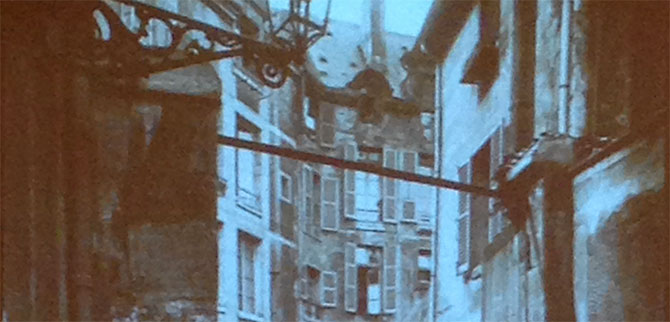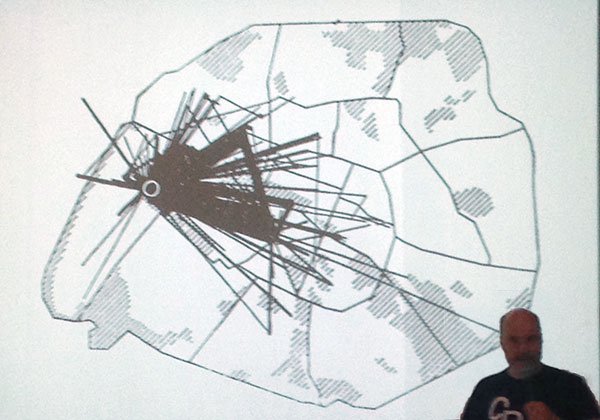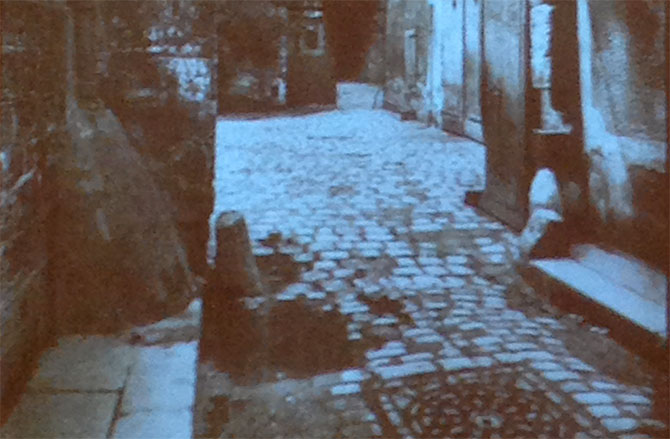| |
Graffiti y psicogeografía, la ciudad como terreno de juego
Para los artistas graffiteros, la componente plástico visual es solo una parte de su actividad. Tanto o más peso tiene la componente de exploración y reinterpretación del entorno. El graffiti es en realidad más cercano al skate, el parkour o la exploración urbana que a la pintura. Javier Abarca hace uso de la teoría situacionista para arrojar luz sobre este asunto y otros aspectos relativamente desconocidos, que ilustran a la perfección la visión de la forma de arte propuesto en el curso.
|
|
Graffiti and psychogeography, the city as a playground
For graffiti artists, the visual and plastic components is only a small part of their activity. The component of exploration and reinterpretation of the environment is as much or more important. Graffiti is actually much closer to skate, parkour or urban exploration than to painting. Javier Abarca makes use of the situationist theory to shed light on this matter and other relatively unknown aspects, which perfectly illustrate the vision of art form proposed in the course. |
| |
Arte urbano, política y sociedad // crítica //
El graffiti no es una forma de pintura, sino una exploración urbana. La pintada en un vago reflejo de lo que pasó.
El graffiti es acción, algo que sales y experimentas. Las herramientas situacionistas sirven para entender que el graffiti, que más que pintura es un juego de exploración y una forma de burlar la alienación urbana. El graffiti y la psicogeografía, la ciudad como espacio de juego (playground) Navegar la ciudad según otros parámetros. Conocimiento amplio y intimo de la ciudad. El graffiti, los graffiteros, nos descubren espacios que no conocemos (El tercer Paisaje de Gilles Clement) No tanto salir de las rutas como salir de las expectativas sociales. Juegos lácticos exploratorios físicos de comportamientos sociales. Su materia es la ciudad. La pintura es solo la superficie.
Un graffiti, la pintada, no es importante a lo largo del tiempo (la durabilidad) más bien la acumulacion y plenitud de recursos: robar botes de pintura, pintar donde se puede. Constancia, falta de miedo, sensibilidad artística (en su sentido más amplio) Adaptarse al soporte, se valora más pintar mucho que pintar bien. Ser graffitero es moverte.
#Tag - firmas en espacio público, espacio urbano.
Escribir tu nombre en el espacio público. Cuanto más veces mejor, es un juego competitivo. Competir por el espacio visual. Negar la individualidad que además te aísla. Parodia de la publicidad. El graffiti como détournement desde la sub- o contracultura. Modificación mínima de otro mensaje, en su origen normalmente publicitario. Revela la debilidad de la fachada.
El metro, otra herramienta de alienacion. Los graffiteros lo convierten en una experiencia subjetiva, explosion de color. El graffiti se apropia de las tacticas, espaciales y anunciativas. Burla, porque no se vende nada (Kool Killer o la insurrección del signo de Jean Baudrillard, texto sobre el graffiti como “significantes vacíos” sin significado) y lo confronta: repetividad, competicion, acumulacion y profundamente apolitica (aunque al actuar en el espacio público lo leemos como tal) Individualista, porque es todos contra todos, el YO contra todos. Una válvula de escape a través del escape. Una gamberrada que parte del mundo globalizado y la cultura de masas. La experiencia, no solo el resultado. El graffiti como manera de sobrevivir, en esa ciudad que parece hecho por un robot.
Arte urbano de los sesenta a los ochenta
En las últimas décadas han surgido múltiples culturas con metodologías y ambiciones similares. En los 60 tácticas como la performance o el land art permitieron a los artistas romper con las formas convencionales de arte. De este impulso surgieron también numerosos experimentos que hoy llamaríamos arte urbano. Recursos y técnicas que aparentan ser hallazgos cruciales de la presente generación fueron en realidad investigados a fondo durante los sesenta y setenta por artistas aislados. La primera oleada de arte urbano surgió en losochenta, a partir de la confluencia del arte contemporáneo con la publicidad exterior, el graffiti y el punk.
El graffiti no es «Arte» El graffiti sin tener intención de serlo es una forma de arte, puede entenderse como una forma de arte, pero no tiene nada que ver con el Arte. Es una tradición aparte, con sus propios valores, mitologías, metodologías y estéticas, tan interesante o más que cualquier otra. |
|
Urban art, politics and society // criticism //
Graffiti is not a form of painting, but an urban exploration. The graffiti in a vague reflection of what happened.
Graffiti is action, something you go out and experience. The Situationist tools serve to understand that graffiti, which more than painting, is a game of exploration and a way to circumvent urban alienation. Graffiti and psychogeography, the city as a playground. Navigate the city according to other parameters. Wide and intimate knowledge of the city. Graffiti, the graffiti artists, reveal spaces that we do not know (Gilles Clement's The third landscape) Not so much leaving the routes as leaving social expectations. Exploratory physical lactic games of social behaviors. Its subject is the city. The painting is just the surface.
A graffiti, the graffiti, is not important over time (durability) but rather the accumulation and fullness of resources: steal cans of paint, paint where you can. Consistency, lack of fear, artistic sensitivity (in its broadest sense) Adapting to the medium, it is more valued to paint a lot than to paint well. To be a graffiti artist is about moving.
#Tag - name writing in public space.
Write your name in public space. The more times the better, it is a competitive game. Compete for visual space. Denying the individuality that also isolates you. Advertising parody. Graffiti as détournement from the sub- or counterculture. Minimal modification of another message, in its origin normally advertising. Reveals the weakness of the facade.
The subway, another alienation tool. The graffiti artists make it a subjective experience, an explosion of color. Graffiti appropriates tactics, space and advertising. It mocks, because nothing is sold (Kool Killer or Jean Baudrillard's insurrection of the sign, text about graffiti as "empty signifiers" without meaning) and confronts it: repetitiveness, competition, accumulation and profoundly apolitical (although when acting in space public we read it as such) Individualistic, because it is all against all, the I against all. An exhaust valve through the exhaust. A hooligan who starts from the globalized world and mass culture. The experience, not just the result. Graffiti as a way to survive, in that city that seems to be made by a robot.
Urban art from the sixties to the eighties
Multiple cultures with similar methodologies and ambitions have emerged in recent decades. In the 60s tactics such as performance or land art allowed artists to break with conventional forms of art. From this impulse also arose numerous experiments that today we would call urban art. Resources and techniques that appear to be crucial findings of the present generation were actually thoroughly investigated during the sixty and the seventies by isolated artists. The first wave of urban art emerged in the eighties, from the confluence of contemporary art with outdoor advertising, graffiti and punk.
Graffiti is not «Art» The graffiti, with no intention of being it is an art form, can be understood as an art formbut it has nothing to do with Art. The Graffit culture has its own values, mythologies, methodologies and aesthetics, as interesting or more than any other. |


